introduction
Every successful business has one thing in common—smart systems that keep everything running smoothly. No matter how talented your team is, without the right business management tools, things quickly slip into chaos. Think about it: missed deadlines, poor communication, scattered documents, and endless spreadsheets—this is how many businesses lose growth opportunities.
The truth is, modern business management tools aren’t just nice-to-have; they’re the backbone of productivity and decision-making in today’s competitive market. From managing projects and finances to keeping employees and customers on the same page, the right business management tools give you control, clarity, and confidence. Over time, I’ve seen businesses transform dramatically just by adopting the right solutions. If you truly want your business to scale, work smarter, and stay ahead of competitors, mastering business management tools is no longer optional—it’s essential.
Table of Contents
Business Management Tools
In today’s competitive world, no business can run efficiently without the right set of business management tools. Whether you’re a small startup or a growing enterprise, these tools help you organize daily operations, improve team collaboration, and save valuable time. Simply put, business management tools are software or applications designed to simplify complex business tasks like project tracking, customer communication, accounting, HR, and reporting.
The real power of business management tools lies in how they bring everything into one place. Instead of switching between multiple apps or relying on manual processes, businesses can manage projects, finances, teams, and customers seamlessly. This not only boosts productivity but also improves decision-making by giving real-time insights.
1. Trello (Project Management Tool)
Work: Trello is a Kanban-style project management tool that organizes tasks into cards and boards. Each board stands for a project, with tasks progressing through stages like To-Do, In Progress, and Done.
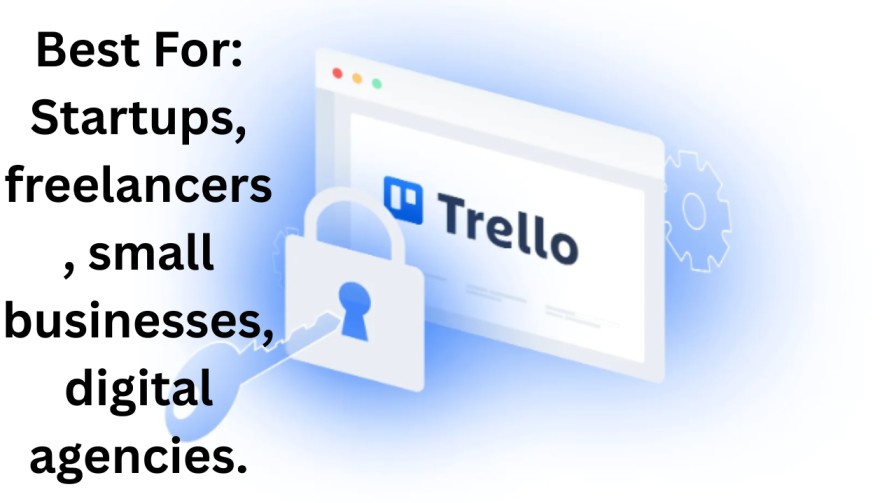
Benefits:
Visual and simple task management.
Easy drag-and-drop interface.
Set due dates, checklists, and task owners.
Power-Ups for integrations (Slack, Google Drive, Jira).
Use Cases:
Marketing campaign planning.
Software or product development.
Content calendar management.
Freelancers managing client projects.
Best For: Startups, freelancers, small businesses, digital agencies.
Pricing:
Free Plan – The free plan includes unlimited cards and 10 boards for each workspace.
Pro Plan – $5/user/month with unlimited boards and advanced features.
2. Slack (Team Communication Tool)
Work: Slack is a real-time messaging and collaboration tool that helps teams communicate faster than traditional email.
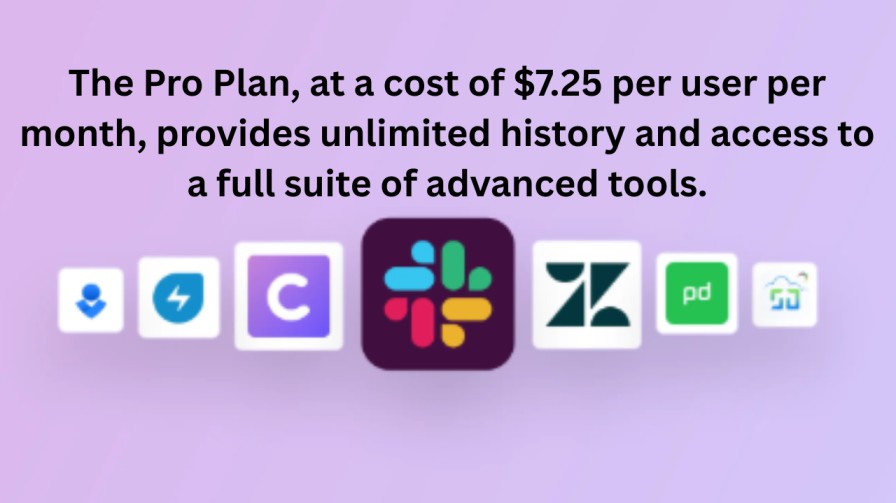
Benefits:
Channels for different teams or projects.
Direct messages, voice, and video calls.
Integrates with 2,000+ apps (Zoom, Trello, Google Drive).
File sharing and searchable history.
Use Cases:
Remote team communication.
Agencies managing multiple clients.
Internal team collaboration.
Best For: Startups, SMEs, remote teams, hybrid businesses.
Pricing:
Free Plan – Limited message history (90 days), 10 integrations.
Pro Plan – The Pro Plan, at a cost of $7.25 per user per month, provides unlimited history and access to a full suite of advanced tools.
3. Asana (Task & Workflow Management)
Work: Asana is a workflow and task management tool that helps teams organize, track, and manage projects efficiently.
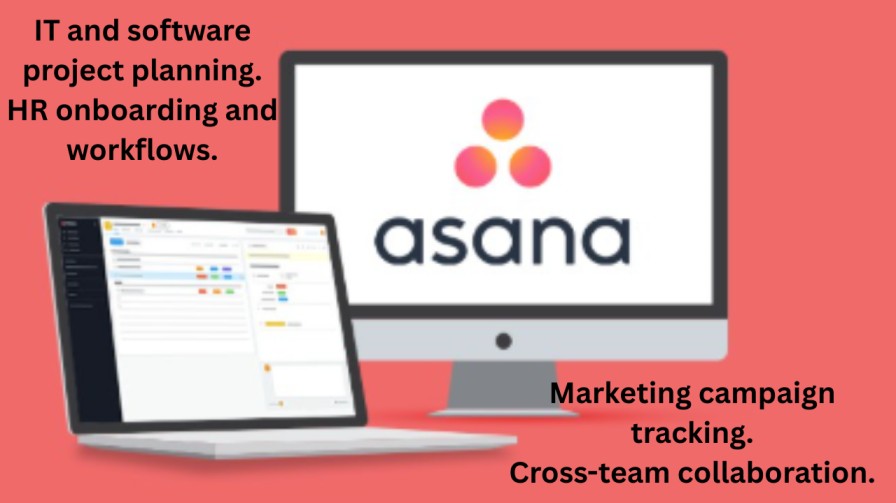
Benefits:
Assign tasks with deadlines and priorities.
Visual timeline & Gantt charts.
Automate repetitive workflows.
Reporting dashboards for tracking performance.
Use Cases:
IT and software project planning.
HR onboarding and workflows.
Marketing campaign tracking.
Cross-team collaboration.
Best For: SMEs, agencies, IT teams, project managers.
Pricing:
Free Plan – Basic projects and tasks for up to 15 users.
Premium Plan – $10.99/user/month with advanced reporting and automation.
4. QuickBooks (Accounting & Finance Tool)
Work: QuickBooks is a business accounting software that simplifies bookkeeping, payroll, and tax filing for SMEs.
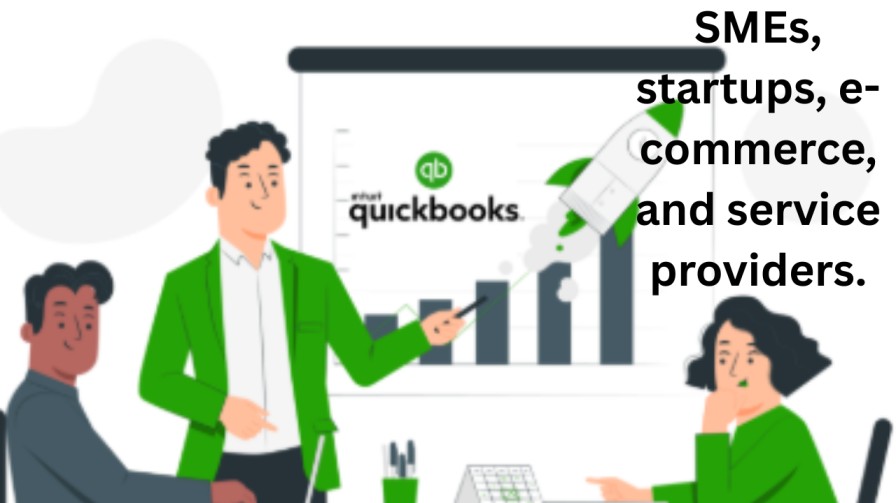
Benefits:
Automatic expense tracking via bank sync.
Easy invoicing and payment collection.
Tax-ready reports (GST/VAT).
Profit & loss statements with one click.
Use Cases:
Daily accounting for small businesses.
Freelancers sending invoices.
Accountants managing multiple clients.
Best For: SMEs, startups, e-commerce, and service providers.
Pricing:
No Free Plan.
Paid Plan – Starts at $25/month.
5. HubSpot CRM (Customer Relationship Management)
Work: HubSpot CRM is a free CRM tool that helps businesses manage customer relationships, sales pipelines, and communication.
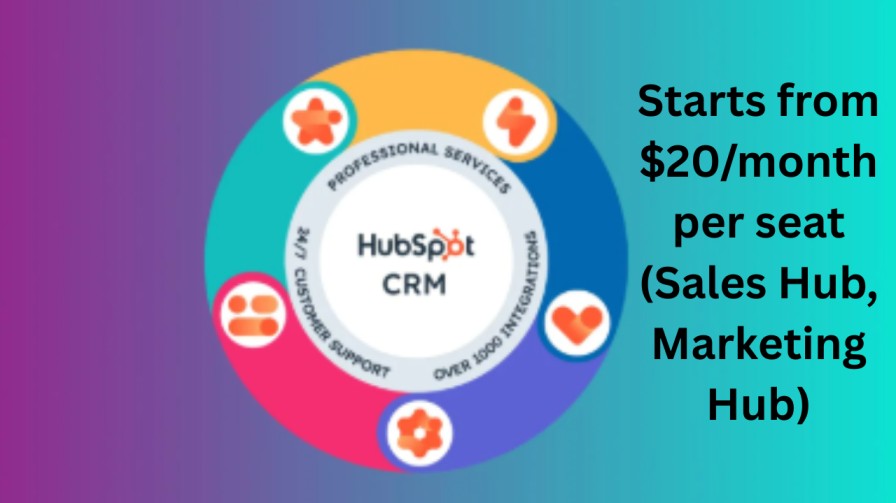
Benefits:
100% free CRM for unlimited users.
Track leads, calls, and emails.
Manage sales pipelines with ease.
Integrates with Gmail, Outlook, and more.
Use Cases:
Startups nurturing leads.
Sales teams tracking deals.
Agencies managing client relationships.
Best For: Startups, SMEs, B2B businesses.
Pricing:
Free CRM – Includes contacts, pipelines, and forms.
Pro Plan – Starts from $20/month per seat (Sales Hub, Marketing Hub).
6. Google Drive (Document Management Tool)
Work: Google Drive is a cloud-based storage and collaboration tool that lets teams store, share, and edit files in real time.

Benefits:
15GB free storage.
Real-time document editing.
Works with Google Docs, Sheets, and Slides.
Secure sharing with access controls.
Use Cases:
Teams collaborating on projects.
Remote workers accessing shared files.
Agencies storing client deliverables.
Best For: All businesses, freelancers, startups.
Pricing:
Free Plan – 15GB free storage.
Google Workspace – Starts at $6/user/month.
7. Zoom (Video Conferencing Tool)
Work: Zoom is a video conferencing platform that people use for online meetings, webinars, and working together remotely.

Benefits:
HD video calls for 100+ participants.
Screen sharing and whiteboards.
Breakout rooms for training.
Cloud recordings for later use.
Use Cases:
Online client meetings.
Remote team discussions.
Online teaching and training.
Webinars for marketing.
Best For: Remote teams, educators, enterprises, coaches.
Pricing:
Free Plan – offers meetings up to 40 minutes long for as many as 100 participants.
Pro Plan – $14.99/user/month.
8. Zoho One (All-in-One Suite)
Work: Zoho One is an all-in-one business management suite with 40+ apps for CRM, HR, Finance, Marketing, Project Management, and Analytics.
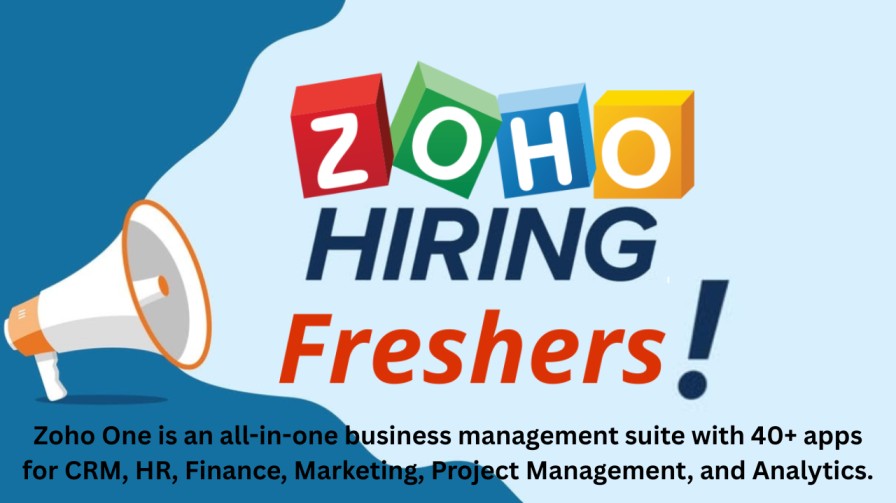
Benefits:
One subscription for all apps.
Smooth integration across departments.
Scalable for growing businesses.
Cost-effective compared to buying multiple tools.
Use Cases:
SMEs managing everything in one platform.
Enterprises unifying operations.
Startups scaling rapidly.
Best For: SMEs, enterprises, startups.
Pricing:
No Free Plan.
Paid Plan – $37/month per employee.
what is business management software
If you’ve ever wondered what is business management software, the simplest way to explain it is this: it’s a digital toolkit that helps businesses organize, automate, and track their day-to-day operations. Rather than trying to manage everything with a bunch of spreadsheets, sticky notes, and separate apps, business management software puts it all in one place. It can handle tasks like project planning, employee scheduling, customer relationship management, invoicing, reporting, and even communication—saving time and reducing errors.
When people ask me “what is business management software and why is it important?”, I like to compare it to a control center for your company. Just like pilots rely on dashboards to navigate safely, business owners use these tools to monitor performance, improve collaboration, and make better decisions. Whether you’re a startup trying to grow or an established company managing multiple teams, business management software gives you the structure and clarity you need to stay on track.
In short, if you’re still running your business manually, understanding what is business management software is the first step toward building a smarter, more scalable organization.
Business Card Definition and Purpose
A business card is more than just a piece of paper; it’s a small but powerful tool for marketing and networking. By definition, a business card is a compact card that shares essential details such as your name, job title, company name, contact information, and often a logo or brand element.
The purpose of a business card is to establish professionalism and provide a quick, tangible way for others to remember you. In face-to-face meetings, events, or conferences, handing someone your card makes an instant impact. Unlike digital contact exchanges, a card is physical, personal, and memorable.
A well-designed business card also strengthens brand identity. The colors, fonts, and design elements you choose reflect your company’s personality and values, giving people a snapshot of your professionalism. In many ways, it’s the first impression your business leaves behind.
How It Works for SMEs and Enterprises
For SMEs (small and medium-sized enterprises), business cards are an affordable branding tool. They help entrepreneurs, freelancers, and small business owners look professional, build trust, and make new connections without spending heavily on marketing. A simple exchange of cards during networking can lead to partnerships, clients, or referrals.
For large companies, business cards are an essential element of their corporate identity. When designed consistently across the organization—with logos, brand colors, and standard formats—they reinforce the company’s brand image. Executives and employees use them as relationship-building tools in meetings, trade shows, and global conferences.
In both cases, whether it’s a growing SME or a multinational enterprise, business cards work as a bridge between first impressions and long-term business relationships. They don’t just share information—they tell your story in a compact, professional way.
Benefits of Business Management Tools for Small Businesses
Running a small business is exciting but also challenging—you’re often juggling sales, marketing, accounts, employees, and customer service all at once. This is where Business Management Tools for Small Businesses become a game-changer. These tools bring structure, efficiency, and growth opportunities, allowing business owners to focus more on strategy rather than being stuck in repetitive tasks.
Improved Productivity
One of the biggest benefits of Business Management Tools for Small Businesses is time-saving. Instead of handling projects and tasks manually, tools like Trello or Asana help teams assign, track, and complete work faster.
Better Financial Management
For small businesses, managing money efficiently is critical. Tools like QuickBooks simplify accounting, invoicing, and tax preparation, reducing errors and ensuring cash flow stays healthy.
Stronger Customer Relationships
Using CRM tools such as HubSpot helps track leads, follow up with customers, and manage communication. This means no lost emails, no forgotten follow-ups, and better customer satisfaction.
Enhanced Team Collaboration
With tools like Slack and Google Drive, teams can work together seamlessly—even if they’re spread across different locations. This makes remote work much smoother and more productive.
Cost-Effective Growth
Investing in Business Management Tools for Small Businesses is often cheaper than hiring additional staff. Automating repetitive tasks allows business owners to scale without overspending on overheads.
Smarter Decision Making
Analytics and reporting tools provide real-time insights into sales, employee performance, or financial health. This lets small businesses make choices based on solid data instead of just guessing.
In short, the Benefits of Business Management Tools for Small Businesses include saving time, improving efficiency, boosting customer satisfaction, and enabling long-term growth. By choosing the right tools, even small businesses can compete with larger companies in today’s fast-moving market.
types of business management software
When we talk about the different types of business management software, we’re essentially looking at the digital backbone of modern businesses. Whether you are running a small startup or managing a large enterprise, these tools make everyday operations more efficient, reduce manual errors, and help teams work in sync. Let’s explore the most important types of business management software in detail, along with how they work, their benefits, and who should use them.
Project Management Software
A widely used type of business management software is project management software. It allows teams to plan, assign, and keep track of tasks as they happen. Rather than using scattered spreadsheets or long email threads, everything is managed in a single dashboard. Tools like Trello, Asana, and Monday.com make it easy to set deadlines, create task lists, and monitor progress. For small businesses, the free versions of these tools are often sufficient, but as your team expands, pro versions provide access to advanced features such as automation, integrations, and reporting. The greatest advantage of project management software is clarity. Everyone knows what needs to be done, when it’s due, and how the overall project is moving forward. For instance, a marketing agency can use Trello boards to assign responsibilities for various campaigns, ensuring that no tasks are missed.
Customer Relationship Management (CRM) Software
Another important category is Customer Relationship Management (CRM) software, which helps businesses build and maintain strong customer connections. CRM systems store customer details, communication history, and sales pipelines, making it easier for teams to manage leads and close deals. Free tools like HubSpot CRM are great for startups, while advanced platforms like Salesforce or Zoho CRM are ideal for larger organizations. A CRM system benefits businesses by automating follow-ups, sending reminders, and tracking customer interactions in one place. For instance, a real estate company can use CRM software to track buyer inquiries, set up meetings, and send automated property updates, ensuring no opportunity is missed.
Accounting and Finance Software
Managing money is at the heart of any business, and this is where accounting and finance software comes in. Instead of manually entering numbers into spreadsheets, tools like QuickBooks, Xero, and FreshBooks automate invoicing, track expenses, generate reports, and even prepare tax documents. While most of these tools are paid, they save countless hours and reduce the risk of financial errors. For freelancers and small businesses, this software is especially valuable because it allows them to keep a clear picture of their cash flow. For example, an online shop owner can connect their payment gateway with QuickBooks to automatically record transactions and send invoices to customers.
Human Resource (HR) Software
As businesses grow, managing employees becomes more complex. HR software streamlines a variety of human resources tasks, including hiring, onboarding new employees, managing payroll, and tracking performance. Tools such as BambooHR, Gusto, and Zoho People (which even has a free plan) centralize employee data, making it easier to manage everything from attendance to salary processing. The biggest advantage of HR software is that it reduces paperwork, ensures accuracy, and enhances employee satisfaction. For example, a company with 100 employees can use HR software to track leave applications, calculate payroll automatically, and even evaluate employee performance through a digital dashboard.
Communication and Collaboration Tools
No matter how great your business idea is, poor communication can slow everything down. That’s why communication and collaboration software is crucial. Tools like Slack, Microsoft Teams, and Google Workspace help teams stay connected through chat, video calls, and document sharing. Free versions usually work well for startups, but larger companies often invest in pro versions for features like unlimited storage and advanced security. The benefit is obvious—teams can communicate instantly, share updates, and collaborate on projects without long delays. Remote teams, in particular, find these tools essential for staying in sync across different time zones.
Inventory and Supply Chain Software
For businesses in retail and e-commerce, inventory and supply chain management software is a huge advantage. Instead of having to guess how much stock you have, businesses can track inventory in real time and automatically reorder products when levels get low. Tools like TradeGecko, NetSuite, and Odoo help businesses avoid having too much or too little stock, which saves money and makes operations more efficient. Odoo even has a free version, which is perfect for small businesses. For example, a clothing store can get instant alerts when popular sizes are low and place automatic orders, so they never lose a sale because an item is out of stock.
Reporting and Analytics Software
Finally, businesses need reporting and analytics software to turn raw data into meaningful insights. Platforms like Google Analytics, Tableau, and Power BI make it easy to track customer behavior, sales trends, and performance metrics. Google Analytics is free, while tools like Tableau and Power BI offer both free and paid options. Using analytics software helps business owners make smarter, more informed decisions. For example, an online store can see which marketing campaigns bring in the most traffic and focus their budget accordingly.
Final Thoughts
The different types of business management software are designed to solve specific challenges, from managing projects and customers to handling money, employees, and data. The main thing is to understand your business’s specific needs before you choose the right software. Smaller businesses may rely on free versions of project management and accounting tools, while larger enterprises might invest in advanced, all-in-one platforms. No matter the size, using the right business management software ensures smoother operations, better decision-making, and ultimately, business growth.
top business management tools in 2025
Managing a business in today’s fast-moving world is no small challenge. From keeping your team aligned to tracking finances, handling customers, and running smooth operations, the workload can quickly become overwhelming. That’s where business management tools in 2025 step in. These tools are designed to simplify complicated tasks, boost productivity, and give business owners the clarity they need to make smart decisions.
What makes business management tools in 2025 different from the old systems is how smart and connected they’ve become. With artificial intelligence, automation, and cloud-based integration, businesses can now save time, reduce costs, and scale faster than ever before. Whether you’re a small business owner in Australia, a startup in the USA, or managing teams in the UK or New Zealand, the right tools can give you a real competitive advantage.
Here’s a detailed look at the top business management tools in 2025, how they work, their benefits, and who they’re best suited for.
Zoho One – All-in-One Business Suite
Zoho One is often called the “operating system for business” because it offers more than 40 integrated applications in a single package. Zoho One allows businesses to manage everything in one place, from CRM and HR to accounting, marketing, and project management.
In 2025, Zoho has supercharged its AI assistant, Zia, making it easier for businesses to automate workflows, analyze data, and get insights without heavy manual work.
Work: It streamlines operations for sales, finance, human resources, and support.
Benefits: Saves costs by replacing multiple tools with one platform, reduces manual tasks with automation.
It’s best for small to medium-sized businesses that are looking for an affordable all-in-one solution.
Pricing: Paid plans with affordable monthly subscriptions (free trial available).
HubSpot – CRM and Marketing Automation
HubSpot is one of the most trusted business management tools in 2025 when it comes to customer relationship management and marketing automation. What makes it stand out is its ability to grow with your business. Startups can begin by using HubSpot’s free CRM, then upgrade to more advanced marketing, sales, and customer service features as the company expands.
In 2025, HubSpot is using AI to help predict customer behavior, personalize campaigns, and optimize sales pipelines.
Work: Tracks leads, manages customer interactions, automates marketing campaigns.
Benefits: Free CRM to start, easy integration with other tools, highly scalable.
Best For: Small businesses and enterprises looking to boost customer engagement.
Pricing: Free CRM available; advanced tools on paid plans.
Slack – Team Communication & Collaboration
Smooth communication is essential for any successful business. Slack has been a favorite for years, and in 2025 it’s even more powerful. It integrates with Google Drive, Trello, Zoom, and hundreds of other apps.
The latest AI features in Slack summarize long conversations, pull out key action points, and even analyze the tone of discussions to detect potential issues early.
Work: Instant messaging, team collaboration, and file sharing.
Benefits: Keeps teams connected (remote or in-office), reduces email overload, boosts productivity.
Best For: Startups, remote teams, and enterprises managing global workforces.
Pricing: Free plan available, paid versions unlock advanced features.
Asana – Project & Task Management
If you want to keep projects on track, Asana is one of the top business management tools in 2025. It allows teams to organize tasks, assign responsibilities, and monitor progress visually through boards, lists, and timelines.
The 2025 version of Asana includes AI-powered forecasting, which helps teams predict project delays and manage risks before they become major issues.
Work: Organizes projects, tracks deadlines, automates workflows.
Benefits: Clear visibility into team progress, risk management with AI, easy for both small and large teams.
Best For: Project managers, creative agencies, and growing companies.
Pricing: Free for small teams; premium features available in paid versions.
QuickBooks – Accounting & Finance Software
Finances are one of the most critical parts of any business, and QuickBooks continues to be a leader in this space. In 2025, QuickBooks has evolved into a full cloud-based finance management system with AI cash flow predictions, tax automation, and seamless integration with e-commerce platforms.
Work: Tracks expenses, generates invoices, manages payroll, predicts cash flow.
Benefits: Saves time on manual accounting, reduces financial errors, keeps businesses tax-compliant.
Best For: Freelancers, SMEs, and accountants.
Pricing: Paid subscription (free trial available).
Trello – Visual Project Management
Trello is famous for its simple and visual Kanban board system. It’s one of the easiest business management tools in 2025 for organizing tasks. The latest update has brought AI task recommendations, time tracking, and team performance reports.
Work: Task organization with drag-and-drop boards.
Benefits: User-friendly, great for startups and creative teams, automation saves time.
Best For: Startups, freelancers, and creative teams.
Pricing: A free version is available, with paid plans that include more advanced features.
Microsoft Teams – Enterprise Collaboration
Microsoft Teams has become an essential tool for large organizations. In 2025, it comes with AI-driven meeting summaries, real-time translations, and even automated task assignment during meetings. Being deeply connected with Microsoft 365 makes it even more powerful for businesses that rely on Word, Excel, and Outlook.
Work: Video calls, chat, team collaboration, and file sharing.
Benefits: Strong security, powerful integrations, AI-powered productivity.
Best For: Medium to large enterprises and multinational companies.
Pricing: Free plan with Microsoft 365; advanced enterprise plans available.
Final Thoughts
The right business management tools in 2025 can transform how businesses operate. Startups might find Trello, Slack, or HubSpot CRM a great fit since they offer free versions, while SMEs can benefit from Zoho One or QuickBooks. On the other hand, enterprises managing global teams may lean toward Microsoft Teams or Asana for advanced collaboration and project control.
No matter your industry, these tools are designed to save time, reduce stress, and improve decision-making so you can focus on what really matters—growing your business.
Overview of Zoho One – The Operating System for Business
When it comes to running a business in today’s digital age, efficiency and integration are everything. That’s exactly why Zoho One – The Operating System for Business has become such a game-changer. Unlike traditional software bundles where you buy different tools from different vendors, Zoho One brings everything together in a single, unified platform. It’s not just another app—it’s a complete ecosystem designed to help businesses manage every aspect of their operations.
So, what exactly is Zoho One – The Operating System for Business? You can think of it as a digital command center. With over 45+ integrated applications, it allows businesses to manage sales, marketing, HR, finance, support, and project management seamlessly. Instead of switching between multiple tools, Zoho One gives you one login, one dashboard, and one source of truth for your business data.
The real strength of Zoho One – The Operating System for Business lies in its integration. For example, the CRM app talks directly to the email marketing tool, which connects with accounting, which in turn links to project management. This flow of data ensures nothing gets lost in silos and your team always has the bigger picture.
CRM (Customer Relationship Management): Manage leads, sales pipelines, and customer relationships.
Finance Suite: Tools for accounting, invoicing, and expense tracking.
HR and Payroll: Employee management, recruitment, and payroll processing.
Project Management: Organize, assign, and monitor tasks.
Collaboration Tools: Messaging, video calls, and document sharing.
Marketing Automation: Marketing automation involves managing email campaigns, scheduling social media posts, and analyzing performance.
AI Assistant (Zia): Smart insights, predictions, and workflow automation.
Benefits of Using Zoho One – The Operating System for Business:
All-in-One Solution: Saves money by eliminating the need for multiple subscriptions.
Easy Integration: Smooth data flow between apps ensures no duplication or errors.
Scalability: Whether you’re a startup or an enterprise, Zoho One grows with you.
Cost-Effective: Offers enterprise-level tools at a fraction of the cost.
Customization: Tailor workflows and dashboards to match your business needs.
At its core, Zoho One – The Operating System for Business is about giving small and medium businesses the same level of sophistication that large enterprises enjoy—without breaking the bank. It’s flexible, user-friendly, and designed for companies that want to run smarter, not harder.
BMS Platform
In today’s fast-paced business world, companies need more than just separate tools to manage their operations. This is where a business management software (BMS) platform becomes crucial. A BMS platform works as an all-in-one solution that centralizes essential business functions like accounting, HR, sales, marketing, and project management into a single system. Instead of switching between multiple apps and losing time, businesses can handle everything from one unified platform.
Think of a BMS platform as the control center of your company. Just like a pilot relies on a dashboard to monitor different functions at once, managers and business owners use a BMS platform to track performance, assign tasks, manage customers, and analyze data without juggling different tools.
Key Features of a BMS Platform
Project Management – This feature helps you organize tasks, set deadlines, and monitor their progress.
CRM (Customer Relationship Management) – Build stronger customer relationships and manage sales pipelines.
Finance & Accounting – Handle invoices, payroll, and cash flow with ease.
HR Management – Simplify hiring, onboarding, and employee data.
Collaboration Tools – Enhance team communication and simplify file sharing.
Reporting & Analytics – Gain real-time insights for better decision-making.
Benefits of a BMS Platform
Higher Efficiency – Saves time by integrating multiple business functions in one place.
Cost Savings – Reduces the need to buy several different tools.
Scalability – It can be used by both small businesses and large companies.
Seamless Collaboration – Teams can work together without confusion or data silos.
Smarter Decisions – Real-time reports and analytics provide clear business insights.
Who Should Use a BMS Platform?
A BMS platform is suitable for almost every type of organization. Small businesses benefit from lower costs and streamlined operations, while medium and large enterprises rely on it to keep different departments connected and efficient. Whether you’re running a startup or managing a global company, a BMS platform can act as the backbone of your operations—ensuring smooth workflows, better control, and sustainable growth.
What is Final Verdict
When you read an article, a product review, or even a business case study, you often come across a section called the final verdict. But what is final verdict exactly? Simply put, it’s the final judgment or conclusion that summarizes all the points discussed previously. A final verdict helps the reader quickly understand the key takeaway without having to go through every detail again.
In business, the term final verdict is commonly used in product reviews, software comparisons, or service evaluations. For example, after analyzing the features, pros, and cons of different business management tools, the final verdict will highlight which one is best suited for small businesses, growing startups, or large enterprises. This makes it easier for decision-makers to act with confidence.
The importance of knowing what is final verdict lies in its role as a guide. Readers or business owners often do not have time to evaluate every detail. Instead, they are looking for the most practical recommendation. A well-written final verdict does not just summarize—it also gives direction, highlighting what works best, what to avoid, and what to consider in the future.
In short, understanding what is final verdict is essential for clear decision-making. Whether you’re reviewing software, assessing a new business strategy, or simply comparing products online, the final verdict acts like a trusted advisor, pointing you to the smartest choice.
Summary of Best Picks
Choosing the right business management tool can feel like searching for a needle in a haystack. That’s where a summary of best picks makes life easier. Instead of analyzing every single platform, this section highlights the tools that consistently perform well across industries.
For instance, Trello remains a favorite for simple project tracking, QuickBooks shines in accounting, and Zoho One leads as a complete all-in-one solution. Each of these tools has been tested by thousands of businesses and proven to improve efficiency, cut down on manual work, and boost collaboration. A summary of best picks saves time and provides a clear direction for business owners who don’t want to get lost in long reviews.
Recommendations for Different Business Sizes
Every business has unique needs depending on its size, and that’s why recommendations for different business sizes are critical. A startup or freelancer may prefer budget-friendly or free tools like Slack for communication or Google Drive for file sharing. Small businesses with growing teams often benefit from structured solutions like Asana, HubSpot CRM, or FreshBooks. Mid-sized companies, on the other hand, need scalable tools such as Monday.com or Zoho Projects.
Finally, large enterprises require powerful all-in-one solutions like Zoho One or ServiceNow, which can handle complex operations across departments. By tailoring recommendations for different business sizes, businesses avoid overspending on unnecessary features and instead invest in the tools that match their stage of growth.
Conclusion
After exploring the landscape of business management tools, the conclusion brings everything together. Whether you’re a startup looking for affordable solutions, a mid-sized company aiming for scalability, or a large enterprise in need of advanced integration, there’s a tool designed for you.
The conclusion highlights that the best choice depends not just on features but also on usability, budget, and long-term business goals. Investing in the right platform can save countless hours, reduce operational headaches, and improve overall productivity. At the end of the day, the right decision is about aligning the tool with your company’s vision—because the best software is the one that truly supports growth.







Pingback: Best Email Marketing Tools for Businesses in 2025